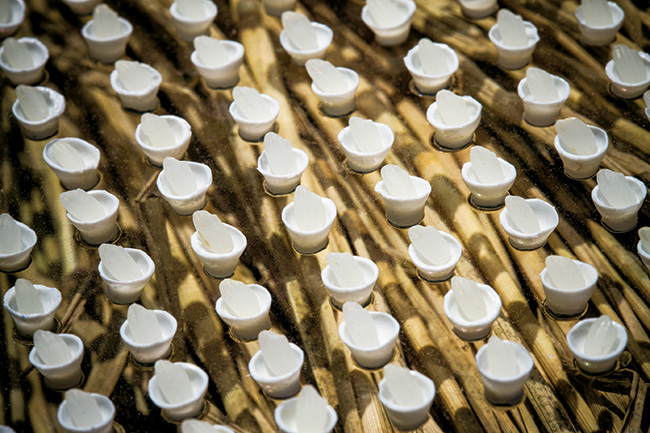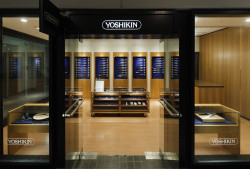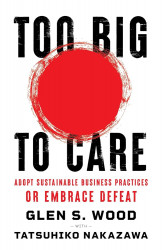
Originally published on metropolis.co.jp on April 2014

You may not realize it until you enter the “Kome: the Art of Rice” exhibition, but rice is the quite probably the biggest thing in Japan. If it could not grow here, Japan as we know it simply couldn’t exist.
The great importance of rice to Japanese society and culture is emphasized by designer Taku Satoh’s enlargements. Measuring several feet across, these show individual rice grains in various states on a scale that gives you an insect’s eye view of the nation’s staple. But this is only one aspect of the hosanna to the rice that this exhibition represents.
Elsewhere there are recordings of sounds associated with rice paddies, rice-related kanji, objects made from the straw left-over from rice cultivation, miniature rice bowls and photos of many aspects of rice production collected together in something called “Kome Mandala.”
As the name of this last work suggests, there is an element of the pseudo-religious about it all. This exhibition represents the apotheosis of the humble grain and 21_21 has effectively been transformed into a temple to the rice god.

There is a laughable quality to much of this, but at the same time it also makes perfect sense. If there is one thing in Japan that shouldn’t be taken for granted, it is rice. But how does this relate to design? After all, this is the whole raison d’être of 21_21 Design Sight, an exhibition venue intended to favor the work of design artists.
A great deal of poetic licence is taken relating rice to design, with allusions to the fact that design is something that stems from nature and evolves out of generations of human practice. Poetry, too, is invoked with a quote by the poet Kenji Miyazawa to describe rice: “They are living things, they are precision machines.”

Yes, the modern rice stalk represents a kind of “design” in that it is a vast improvement on the original rice plant, producing around a thousand grains rather than the original few dozen—and, yes, there are some nicely woven pieces of straw and even the odd art work or two. But this exhibition is yet another example of 21_21 focusing on elements and essentials rather than inspiring high-level design.
This approach seems to stem from Taku Satoh, the institution’s leading curator, and a graphic designer whose forté seems to be unfussy, low-key, minimalist packaging. As such, several of the recent exhibitions at 21_21 have the feel of walking into a Muji store rather than a temple of inspiring design that the venue initially set out to be. A show that would have been ideal for a farming or science museum is not really that appropriate for Japan’s premier design site.
Having said that, rice is definitely the pulse of this country, and I’m fortunate that one of my jobs takes me to Sashiogi, a rice producing area in Saitama, once a week, where I can see the gradually changing rice paddies.
The most interesting works are those that help to recreate this sense of a vital annual cycle, such as Yu Yamanaka’s four-part documentary, Hakusho. But as you watch the program, the designers and artists seem to have all but disappeared and been replaced by farmers.
Until June 15, 21_21 Design Site







